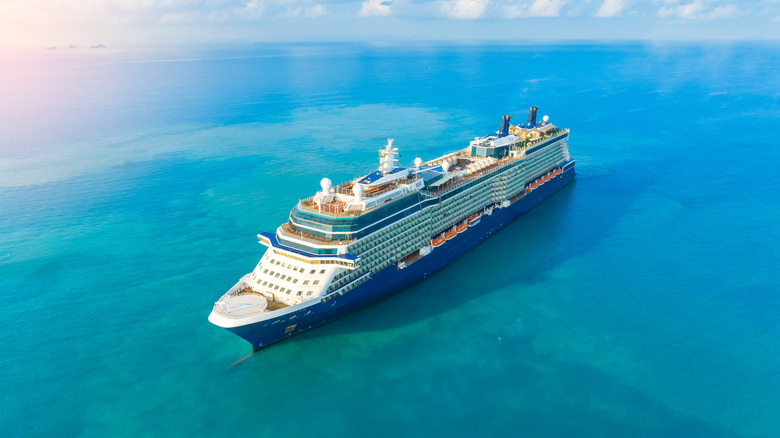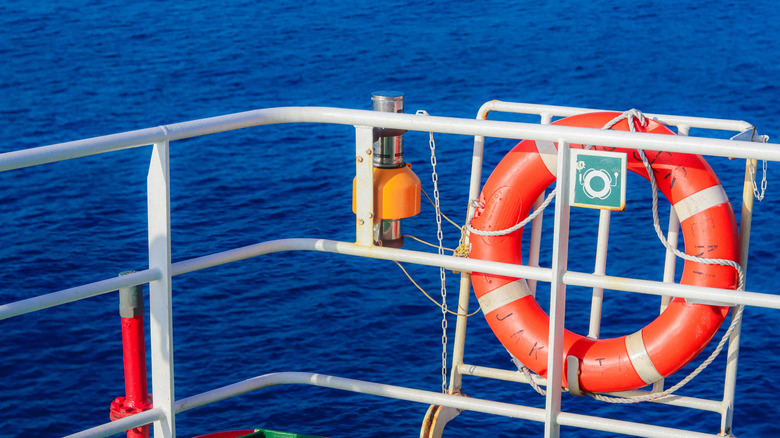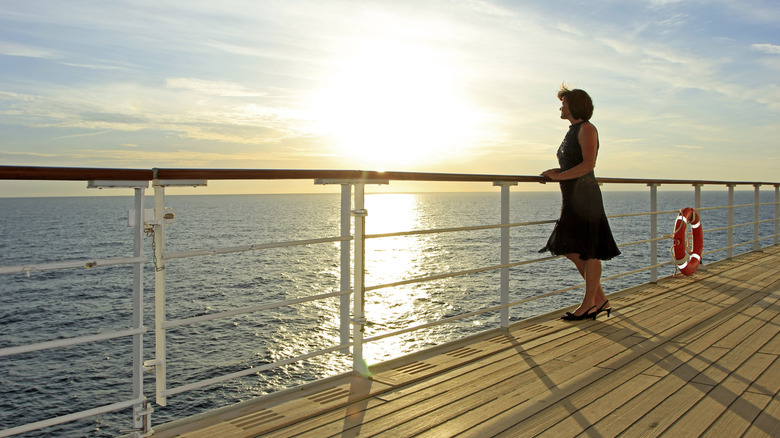What Really Happens On A Cruise Ship When A Passenger Falls Overboard
For many travelers, a cruise vacation is the best way to get out and explore the world. Whether you're going to international destinations like the Caribbean or Europe or staying local to the US and venturing on small, continental cruises full of local history, the experience can be well worth the ticket price. But cruise ships aren't all fun and games. In fact, sometimes they can be deadly, especially if a passenger falls overboard.
Thankfully, falling off a cruise ship is a relatively rare occurrence. According to data from the Cruise Lines International Association (CLIA), there were 212 recorded instances of passengers going overboard between 2009 and 2019, or roughly 21 times per year. Of those, 48 people were successfully rescued. The report said that after investigations, each case was found to be caused by "an intentional or reckless act."
Additionally, cruise ships have protections in place to prevent anyone from falling and protocols and best practices to rescue anyone who does go overboard to increase the chances that the person makes it safely back on the boat. Unfortunately, depending on the circumstances, these incidents can be fatal (making them a potentially unsettling reason to avoid taking a cruise). While we're not saying cruises are inherently dangerous, it's crucial to understand what to do to avoid becoming a victim. Here's what really happens on a cruise ship when a passenger falls overboard.
The inside scoop on cruise ship protocol for overboard passengers
While each cruise line has its own standard protocols, they're all very similar. In the event that someone goes overboard (and someone else sees it), crew members may try to throw a life preserver into the water as close to the person as possible. The ship will also mark the spot where the person went over so they know where to search. You may hear announcements of a "code Oscar," which is standard jargon for "overboard."
Typically, the cruise ship will turn around and deploy a rescue boat to search for the individual. In some cases, this process may take hours, depending on the search area and whether the person is above or below water.
However, even with these protocols in place, going overboard can often be fatal for a myriad of different reasons. According to statistics, about 60 percent of all overboard deaths are a result of cold-water shock. This shock can cause a person to gulp down water or lose air quickly, and they die within several minutes. No matter what, time is of the essence to ensure survival.
What's the likelihood of going overboard on a cruise ship?
For the most part, you shouldn't worry too much about falling overboard on a cruise ship. High railings and other safety measures make it hard for someone to go into the water, so don't assume that the safest option is to book an inside room and just avoid the decks. Typically, the factors that lead to an overboard fall include alcohol, fights, or suicide. For example, if someone is really drunk and leaning over the edge, they may lose their balance and fall off.
But what should you do if you find yourself in such a precarious situation? Well, the best option is to stay calm and try to float. Look for anything that you can use as a floatation device. If no one saw the incident, do what you can to draw attention to yourself. To prevent drowning, resist the urge to thrash, as that wastes heat and energy. If you're in cold waters, you need to conserve as much energy as possible to avoid hypothermia.
Oddly enough, about 20 percent of overboard deaths occur during rescue. Experts chalk this up to victims relaxing when a rescue boat is nearby, leading them to slip beneath the waves or gulp down water by accident. So, don't stop fighting for survival until you're safely back on a boat.


